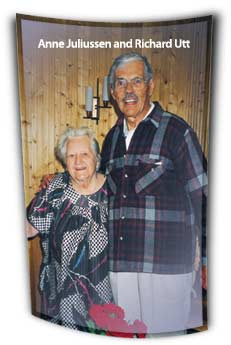 BEGAN WRITING THIS EDITORIAL WHILE WAITING FOR A FLIGHT BACK to Washington at the end of April, following a weekend with our people in Oslo, Norway. And one thing my host, Pastor Tito Correa, said as we drove from the airport a few days earlier kept coming back to me.
BEGAN WRITING THIS EDITORIAL WHILE WAITING FOR A FLIGHT BACK to Washington at the end of April, following a weekend with our people in Oslo, Norway. And one thing my host, Pastor Tito Correa, said as we drove from the airport a few days earlier kept coming back to me.
Longtime readers of Adventist Review may remember an article we published on Norway back in April 1999. Written by Richard H. Utt, it told the story of Anne Juliussen, the only member of her church in Vardø, a little town on Norway’s northern coast. The article told about evangelistic meetings by Elmar Stinessen in 1930; about how a church was formed and a building erected; about how the Second World War scattered the membership; and about how, eventually, the 83-year-old Anne Juliussen, notwithstanding her vigorous witnessing effort over the years, found herself, by 1999, the only member left at the church.
 Utt and his wife, on a cruise to the area, had made a special effort to meet Juliussen, and the article touchingly told what they’d learned about her Sabbath routine: “When Sabbath comes, Anne goes to church by herself, reads her Bible, listens to a taped sermon, prays, and returns to her tiny apartment attached to the church.”
Utt and his wife, on a cruise to the area, had made a special effort to meet Juliussen, and the article touchingly told what they’d learned about her Sabbath routine: “When Sabbath comes, Anne goes to church by herself, reads her Bible, listens to a taped sermon, prays, and returns to her tiny apartment attached to the church.”
Now, sitting at the airport, I remembered what my host had said: “She died. And the church has now been sold.”
In publishing the piece, it was our hope that some Adventist (or a group of Adventists) somewhere would take on that challenge (or others like it) and bring life back to some dying place. It didn’t happen. Now the church is dead.
Several things went through my mind. I realize that when all the logistics are taken into account perhaps only an infinitesimal fraction of us would be in a position to take on a project like that—there’s the question of language, the climate, the culture, the cost (just to name a few). But then I kept thinking about the number of persons and groups that have left the shores of their own country during the past 10 years to conduct evangelism and other outreach events in other fields, contending with just about every one of the logistical factors just named.
Then I wondered how many of those areas covered by these pro-tem missionaries and evangelists were really in dire need. Did not some of them—many of them, in fact—go to areas of the world where “the work” is growing much more rapidly than where they themselves live? How to explain that a person who wouldn’t touch evangelism with a 10-foot pole in their own country can be so eager to spread the message in fields far removed from home? Might there be a motive operating here that needs exploring? Why do we tend to go to areas of the world where the work is fairly well advanced, to the neglect of areas like that mentioned in the Norway story?
To ask the questions is not to presume the answers. Indeed, a range of valid answers might be given. One of them might be the argument that we ought to strike where the iron is hot—or, to change the figure, reap where the harvest is ripe. It’s a valid argument, I think, and it does help to temper certain concerns that one might have.
Unfortunately, a prevailing attitude in the Adventist Church in respect to evangelism is our concentration on “results.” I don’t have a problem with that—except that, carried to extreme, it can lead us to neglect some of the most needy areas of the world. I have this thing about the gospel being preached “as a witness,” regardless of “results.”
How much more might get done if we would dispense with the constant penchant to utilize human measurement! If we would simply go where the spiritual need is greatest!
___________
Roy Adams is an associate editor of the Adventist Review.

 Utt and his wife, on a cruise to the area, had made a special effort to meet Juliussen, and the article touchingly told what they’d learned about her Sabbath routine: “When Sabbath comes, Anne goes to church by herself, reads her Bible, listens to a taped sermon, prays, and returns to her tiny apartment attached to the church.”
Utt and his wife, on a cruise to the area, had made a special effort to meet Juliussen, and the article touchingly told what they’d learned about her Sabbath routine: “When Sabbath comes, Anne goes to church by herself, reads her Bible, listens to a taped sermon, prays, and returns to her tiny apartment attached to the church.”